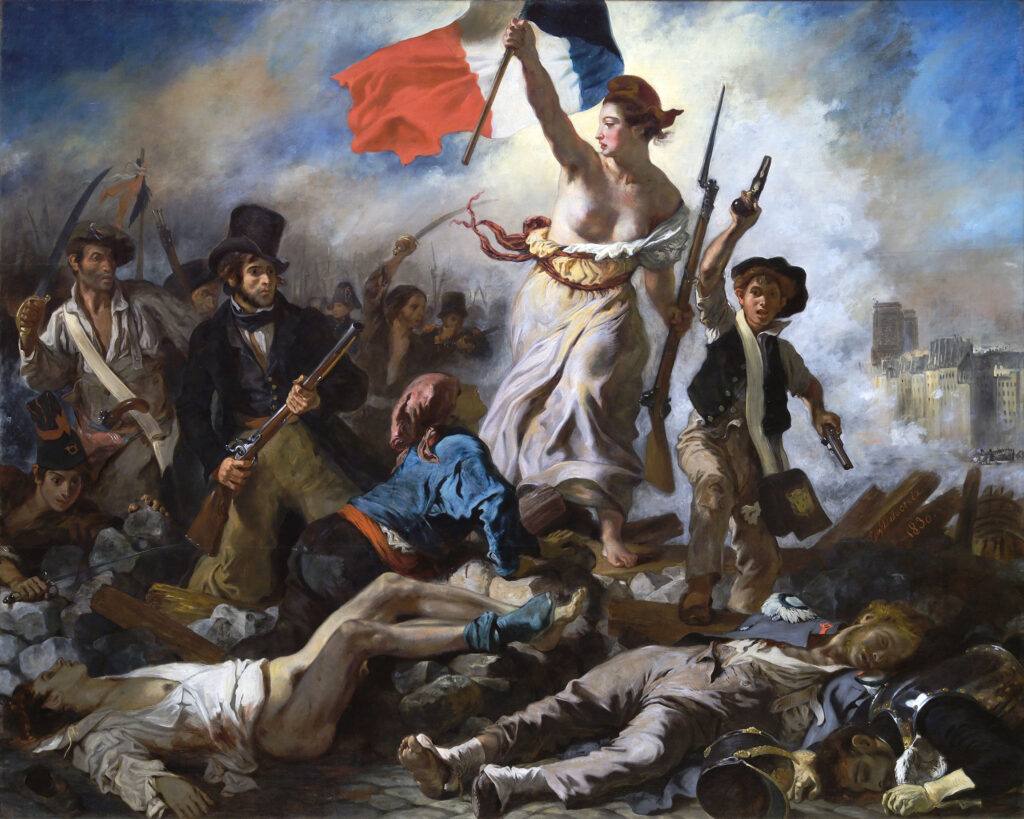Alexis de Tocqueville, a brilliant French historian, wrote Democracy in America. This book is a supreme example of U.S.-watching.
Another book of his, Recollections, shows him wrestling with history itself. If we remember that Clio is the muse of history, then we might say that Recollections is the chronicle of de Tocqueville’s encounter with her.
The question of human history and what de Tocqueville called “the world’s destiny” are described as follows:
l wrote histories without taking part in public affairs, and politicians whose only concern was to control events without a thought of describing them. And I have invariably noticed that the former see general causes everywhere, whereas the latter, spending their lives amid the disconnected events of each day, freely attribute everything to particular incidents and think that all the little strings their hands are busy pulling daily are those that control the world’s destiny. Probably both of them are mistaken.
For my part I hate all those absolute systems that make all the events of history depend on great first causes linked together by the chain of fate and thus succeed, so to speak, in banishing men from the history of the human race. Their boasted breadth seems to me narrow, and their mathematical exactness false. I believe, pace the writers who find these sublime theories to feed their vanity and lighten their labours, that many important historical facts can be explained only by accidental circumstances, while many others are inexplicable. Finally, that chance, or rather the concatenation of secondary causes, which we call by that name because we can’t sort them all out, is a very important element in all that we see taking place in the world’s theatre. But I am firmly convinced that chance can do nothing unless the ground has been prepared in advance. Antecedent facts, the nature of institutions, turns of mind and the state of mores are the materials from which chance composes those impromptu events that surprise and terrify us.
Alexis de Tocqueville, Recollections, 1893, Anchor Books, page 78.
De Tocqueville warns us that the world’s destiny is always murky and what he calls a labyrinth and a whirlwind. He says:
Mentally I reviewed the history of our last sixty years and smiled bitterly to myself as I thought of the illusions cherished at the end of each phase of this long revolution; the theories feeding these illusions; our historians’ learned daydreams, and all the ingenious false systems by which men sought to explain a present still unclearly seen and to foresee the unseen future.
Recollections, page 83.
He continues:
Shall we reach, as other prophets as vain perhaps as their predecessors assure us, a more complete and profound social transformation than our fathers ever foresaw or desired, and which we ourselves cannot yet conceive; or may we not simply end up in that intermittent anarchy which is well known to be the chronic incurable disease of old peoples? I cannot tell, and do not know when this long voyage will end; I am tired of mistaking deceptive mists for the bank. And I often wonder whether that solid land we have sought for so long actually exists, and whether it is not our fate the rove the seas forever!
Recollections, pages 83-84.
And yet, with all that profound uncertainty, he offers a very sweeping interpretation of French history from the French Revolution (1789) to the French Revolution of 1848. The famous painting by Eugène Delacroix, Liberty Leading the People (French: La Liberté guidant le peuple), commemorating the July Revolution of 1830, falls in between.

Despite de Tocqueville’s warnings about the slipperiness of historical judgement, he arrives at an extremely precise interpretation of his own:
Seen as a whole from a distance, our history from 1789 to 1830 appears to be forty-one years of deadly struggle between the Ancien Régime with its traditions, memories, hopes and men (i.e. the aristocrats), and the new France led by the middle class. 1830 would seem to have ended the first period of our revolutions, or rather, of our revolution, for it was always one and the same, through its various fortunes and passions, whose beginning our fathers saw and whose end we shall in all probability not see. All that remained of the Ancien Régime was destroyed forever. In 1830 the triumph of the middle class was decisive and so complete that the narrow limits of the bourgeoisie encompassed all political powers, franchises, prerogatives, indeed the whole government, to the exclusion, in law, of all beneath it and, in fact, of all that had once been above it. Thus the bourgeoisie became not only the sole director of society, but also, one might say, its cultivator. It settled into every office, prodigiously increased the number of offices, and made a habit of living off the public Treasury almost as much as from its own industry.
Recollections, page 5.
Reviewing the first sentence from the quote above, one can see a deep characterization of an era, with the conclusion “in 1830 the triumph of the middle class was decisive…” Notice the profound paradox that on one hand de Tocqueville spoke of the elusiveness of history despite providing the definite description of this period. Contrast “seen as a whole from a distance” with one of the themes of his recollections, that it is not given to us to understand history.